


Hon. Ernest R. Ackerman
(June 17, 1863 - October 19, 1931) New Jersey, Washington, D.C.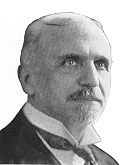
Congressman Ackerman was world famous for his exceptional stamp collections, which he exhibited widely. He was also recognized as philately's most important congressional advocate at the time. During his term as Congressman from New Jersey (1919-1931), he and Senator Joseph Frelinghuysen, also from New Jersey and also an important stamp collector, worked for the successful passage in 1923 of the law permitting publication of illustrations of postage stamps in this country.
Ackerman had many world-famous collections, among them British Guiana and Spain. But his greatest collections were of United States stamps. One of his most notable collections was of Carriers and Locals. It was used by Elliott Perry in his pioneer work on the subject, and was subsequently sold privately by Perry. Another was of U.S. Department stamps, containing some of the most celebrated pieces of that area.
By far the most important of Ackerman's holdings was that of U.S. essays and proofs. He obtained considerable important material from the collections of both Edward H. Mason and James L. Lindsay, the Earl of Crawford as well as from U.S. Government archives. This included the unique set of plate proof sheets of U.S. postage stamps issued form 1857 to 1893.
Ackerman bequeathed this collection to the Library of Congress, but his executors managed to reduce the size of this gift considerably. The set of plate proof sheets and other items were sold privately and at auction. The part of Ackerman's collection that was delivered to the Library of Congress now resides in the National Postal Museum.
Herman “Pat” Herst Jr.
(March 15, 1909 - January 31, 1999) New York, Florida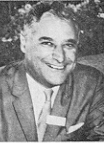
Pat Herst was a world famous philatelic figure, remembered best for his series of anecdotal books about stamp collecting, stamp collectors, stamp dealers, and the famous (and infamous) personalities of philately. These titles include Nassau Street: a Quarter Century of Stamp Dealing (1960 and later) Fun and Profit in Stamp Collecting (1962 and later), Stories to Collect Stamps by (1968), The Complete Philatelist (1979) and Forensic Philately: an Account of the Famous English Stamp Fraud Trials... (1986).
Herst began his philatelic career in 1933 on Nassau Street in New York City, but in 1946 he moved to Shrub Oak, N.Y. where he stayed until he retired in 1973. Pat was a prolific writer and speaker. He conducted 195 auctions, many held at philatelic exhibitions at which he was also the banquet speaker. His newsletter, Herst's Outbursts, issued from the 1940s to 1973, was filled with stories, information and offers written in a style guaranteed to attract the buyer. In 1961 he received the Luff Award for Exceptional Contributions to Philately.
Leon Norman Williams
(March 25, 1914 - April 9, 1999) England
Williams was one of the world's greatest philatelic writers and editors. Beginning in 1934 and continuing until his death, Norman wrote on a variety of philatelic subjects. His older brother, Maurice, who died in 1976, was his collaborator, and they used the byline of L.N. and M. Williams.
One of their favorite subjects was the stories of celebrated and rare stamps. They wrote Famous Stamps (1940), Stamps of Fame (1949), Stamps Day by Day (1950), and Rare Stamps (1967). Norman's last work, which he dedicated to his brother, was Encyclopedia of Rare and Famous Stamps, published in two parts, in 1993 and 1997. A third part may possibly appear.
L.N. and M. Williams were also fascinated with “Cinderella” stamps, those stamp-like non-postal emissions by private and government organizations, and so-called “official forgeries.” They were founders of the Cinderella Stamp Club and edited its Cinderella Philatelist. They also wrote Forged Stamps of Two World Wars (1954) and Cinderella Stamps (1970). With E.F. Hurt, they wrote Priced Catalogue of Local Postage Stamps, and Handbook of Private Local Posts (1950).
Following the footsteps of Fred J. Melville they edited both Stamp Lover (1940-1964) and The British Philatelist (1940-1954). The brothers also wrote Postage Stamps (1950), a popular paperback best-seller for Penguin Books.
Their landmark book, Fundamentals of Philately, edited by David Lidman, was serialized in The American Philatelist, 1954-1963, and published in hard cover in 1971. The book was reprinted in 1990 under Norman's byline with revisions and additions.
Norman Williams wrote an important series of articles on the early history of stamp collecting, "Philately 100 Years Ago," which appeared in the magazine Stamp Collecting during 1981.
L. Norman Williams was one of the founders of Great Britain's Philatelic Writers Society. He was entered into the APS Writers Unit 30 Philatelic Writers Hall of Fame in 1980. He received the Luff Award for Distinguished Philatelic Research in 1991.

Dr. Enzo Diena
(March 23, 1927 - January 20, 2000) Italy
Dr. Diena was an internationally renowned philatelist who was an editor, writer, expert, judge and collector. He was the third generation of acknowledged experts on Italian philately, beginning with his grandfather, Dr. Emilio Diena, over a century ago and continued by his father Alberto and uncle Mario.
Diena began his philatelic career as World War II ended. His first important position was in 1951 as editor of Italia Filatelica. This publication soon merged with the weekly La Settimana del Collezionista to form Il Collezionista - Italia Filatelica, Italy's most popular stamp journal. He continued as editor for 17 years. He also edited the first three years of the Bolaffi Catalog of Italian Stamps (1956-58), and continued as an advisor to the catalog's publisher for the rest of his life. He wrote prolifically on Italian and Italian States stamps, and worked on the Diena expert committee with his father and uncle. Enzo was a founder and president of the International Association of Catalogue Publishers (ASCAT) and served as president of the International Association of Philatelic Expertisers (AIEP).
In 1959 Diena served on his first international jury, and for the next 40 years his command of five languages and his very broad philatelic knowledge, made him a popular choice for international juries. He was a juror for nearly every international philatelic exhibition during that time, often serving as secretary or president.
His philatelic expertise led to his becoming a member of the Philatelic Committee of the Italian Ministry of Posts, and his knowledge of printing led to his serving with the Poligrafico dello Stato (State Printing Works).
Diena signed the Golden Roll of Italian Philately in 1967. He signed the Roll of Distinguished Philatelists in 1977, following his grandfather Emilio, who was one of the RDP founder signatories in 1921, and his uncle Mario who signed the RDP in 1956. He also received the Lichtenstein Medal in 1978 and the Luff Award in 1981 for Exceptional Contributions to Philately. The Berlin Philatelic Club awarded him the Lindenberg Medal in 1984.
C. Belmont Faries
(June 3, 1913 - January 19, 1998) Washington, D.C.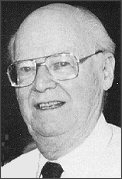
Faries was an outstanding philatelic journalist and editor for nearly 40 years. He was editor of the SPA Journal (1962-1983), editor-in-chief of the Minkus Stamp and Coin Journal throughout its lifetime (1966-1986) and editor of the U.S. Specialist (1983-1988). He also was a columnist for Scott's Monthly Journal. During his career as a journalist for the Washington (D.C.) Star, he wrote the weekly “Philatelic News” column from 1955 until the newspaper closed in 1981. The column received top literature honors at the 1966 SIPEX international exhibition.
"Bel" was a member of the Citizens' Stamp Advisory Committee from 1967 to 1969 for the U.S. Post Office Department, and from 1971 to 1992 for the U.S. Postal Service. He was Chairman from 1975 to 1990. Faries donated his library, working papers, and his personal files of the CSAC meetings to the American Philatelic Research Library.
In 1969 the Society of Philatelic Americans gave him its Lagerloef Award. He was elected to the APS Writers Unit 30 Hall of Fame in 1975. In 1992, Faries received the Luff Award for Exceptional Contributions to Philately.
Dr. Jacques Amable Legrand
(August 29, 1820 - June 6, 1912) France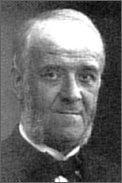
Dr. Legrand was one of philately's early giants. He led the advance of philatelic scholarship in France and influenced other early pioneer philatelists in Europe and the United States. His first writings (on watermarks) were in 1865 in Le Timbrophile, and he continued to write until near his death at age 91. Legrand has been called the “Father of French Philately” and the “Father of Scientific Philately,” both apt titles.
In the 1860s and 1870s, philately was not looked upon as a serious pursuit for an educated person. Like others, Legrand chose to write under a pseudonym: “Dr. Magnus.” His early writings on watermarks on stamp papers, which appeared from April to July 1865 in Le Timbrophile, were collected and published as Essai sur les Filigranes et les Papiers Employés à la Fabrication des Timbres-postes in April 1867. It was the first book about stamps (other than catalogs) ever published; 527 copies were printed.
For the next two decades, Legrand was one of the world's most prolific writers on the “physiognomy” of stamps: color, shade, printing techniques, paper, watermarks and separation. He invented the “odontometer,” (perforation gauge) which he described in the August 1866 issue of Le Timbre-Post.
In 1868 he began a series of articles on postal stationery in Le Timbre-Post, at a time when attention by collectors was just being given to that collecting area. From 1872 to 1874 he edited Gazette des Timbres, and wrote a column, “Petite Gazette,” directed to young collectors. In 1874, Legrand became editor of the new journal, Le Timbres-Fiscal, dedicated to the fast-growing hobby of collecting revenue stamps.Legrand was among the Parisian collectors who, in 1865, organized the first stamp club in philatelic history, Socíeté Philatelique, but it survived less than two years. In 1874, he was among the founders and the first secretary of the Societé Française de Timbrologie. He was a leader in the organization of the Congrès International des Timbrophiles, held in Paris in 1878, the first important philatelic congress.
Legrand built outstanding stamp collections, possessing many of the great rarities. He sold most of his collections around 1897. He also built one of the largest philatelic libraries in Europe. He prepared a “Catalogue de Littérature Philatélique,” published serially in Le Circulaire Philatélique in 1907-1909, but was unable to complete it because of advancing age. He exhibited a portion of his library at the international philatelic exhibition held in Paris in 1900, and conducted jury and guests to his home to see the rest. He was awarded a gold medal.
Dr. Legrand was one of four eminent philatelists who received the Berliner Philatelisten-Klub's first Lindenberg medals in 1906 in recognition of his contributions to philatelic research and writing. In 1921, when the Roll of Distinguished Philatelists was begun, he was named as one of the “Fathers of Philately.”
Walton Eugene Tinsley
(January 22, 1921 - April 12, 1999) Los Angeles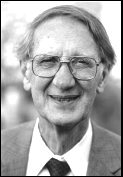
Tinsley was an outstanding collector, author and judge. His most important collections were classic Mexico and Tasmania, but he also collected and exhibited the Netherlands, Transvaal, and postal markings of Edinburgh. He garnered many national and international awards for his exhibits.
"Gene" was active for over 40 years with the Federated Philatelic Clubs of Southern California, the Stamp Exhibition of Southern California (SESCAL) and the Philatelic Society of Los Angeles. He served as president of both the FPCSC and PSLA during the 1960s and received the FPCSC's Distinguished Service Award in 1968. He was the prime mover, and served as president, of World Philatelic Exhibition PACIFIC 97, the country's first international philatelic exhibition held west of Chicago.
He served as the APS Attorney in 1961-1965, and was a member of the APS Board of Vice Presidents in 1965-1969. He was one of the "Committee of Five" who led the APS effort to put the notorious forger Raoul Ch. De Thuin out of business. The story of their successful operation is presented in the APS publication, The Yucatan Affair (1974, reprint 1980).
Tinsley wrote prolifically for several specialty journals including MEPSI's Mexicana. His book Tasmania - Stamps and Postal History, published by the Royal Philatelic Society London in 1986, received a gold medal at the INDIA 89 exhibition.
Tinsley signed the Roll of Distinguished Philatelists in 1983. He received the Luff Award in 1986 for Outstanding Service to the APS.

Victor E. Engstrom
(1914 - July 1, 2000) New Jersey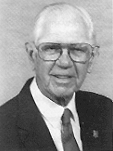
Victor Engstrom was a distinguished collector, writer and expert on Scandinavian philately, who was "a legend in his own time." He collected all the Nordic countries, but his most famous collection was his Danish West Indies.
"Vic" founded the Danish West Indies Study Unit of the Scandinavian Collectors Club and edited its newsletter for fifteen years. He was editor-in-chief of the three volume Danish West Indies Mail 1754-1917 (issued between 1979 and 1982).
Engstrom was an active member of SCC, serving in many positions including president (1971-72). He was an organizer of the Scandinavian Stamp Mart for SCC and was its first manager. He wrote frequently in the SCC journal, The Posthorn on a wide range of subjects. The SCC presented him its Earl Grant Jacobson Award for research in 1982, and its Carl Pelander Award for outstanding service in 1993. He was made an Honorary Life Member in 1988.
He also received the Eugene Klein Research Award from the American Philatelic Congress in 1983. The United States Classics Society presented him its Distinguished Philatelist Award in 1997. In 1996, Engstrom received the Luff Award for Distinguished Philatelic Research from the APS.
Edward Loines Pemberton
(December 10, 1844 - December 12, 1878) England
E.L. Pemberton was called "the most brilliant of the pioneer philatelists." He was England's strongest advocate for "scientific philately" — the study of all aspects of postage stamps production, with attention to color, paper, printing, and separation.
His 1867 work, Catalogue of the Very Fine and Very Complete Collection of Postage Stamps Selected with Great Care by E.L. Pemberton, Esq. Of Birmingham (James J. Woods, Hartlepool) was the first to classify stamps by all their characteristics, including "all the rarest varieties of perforations, watermarks etc. known." It immediately became a popular work among advanced collectors and established Pemberton in the forefront of philatelic experts.
In 1863, Pemberton and Thornton Lewes wrote Forged Stamps: How to Detect Them, one of the first monographs written to help stamp collectors overcome the difficulties caused by the profusion of stamp forgeries of the time. He continued his study of and publications on forgeries for the rest of his life.
Pemberton was the leading writer in the pioneer English philatelic journals, Stamp Collector's Magazine and The Philatelist. One of his favorite topics was U.S. stamps and postal history. Pemberton had been born in New York City, but when his parents died shortly thereafter, he was brought up by his English relatives. He had a special interest in U.S. postmaster provisionals, locals and carriers, and western franks, and carried on a lengthy discourse on these subjects with the pioneer U.S. philatelic student Charles H. Coster.
In 1871, Pemberton formed the stamp company James R. Grant and Co., and in 1872 started a house organ, The Philatelical Journal, dedicated to advanced philately. At that time, he and the leading U.S. stamp dealer, John Walter Scott, considered forming a partnership, but were unable to reach an agreement.
When Scott held the first stamp auction in Europe in 1872 (Scott's fifth auction), Pemberton attended the London auction. The sale included two examples of the 20 cent St. Louis Postmaster Provisional, just discovered by Scott in 1869, but considered by many leading experts to be crude forgeries. Pemberton studied the two examples in Scott's auction and wrote an important paper declaring them genuine giving detailed reasons for his conclusions.
Pemberton organized a pioneering series on stamp forgeries called "The Spud Papers" (the original series contained forgeries tipped into the text). After Pemberton's death, the Reverend R.B. Earée continued it, publishing the series as Album Weeds or How to Detect Forged Stamps (three editions -- 1886, 1892, 1907).
In 1874, Pemberton wrote The Philatelical Catalogue: Being a Complete Catalogue of Postage Stamps, and Postal Envelopes and Cards with Voluminous Notes on Reprints, Forgeries, and Every Subject of Interest (containing upwards of 1100 heliotype illustrations). He also wrote The Stamp Collector's Handbook (1874; 2nd edition 1878). Both were immediate successes especially among advanced collectors.
Pemberton was a founder member (1869) of The Philatelic Society, London (today the Royal Philatelic Society London). He is listed as a "Father of Philately" on the Roll of Distinguished Philatelists.
Philip Silver
(1909 - July 1999) New York City
Philip Silver was an outstanding collector, student, writer, and editor on aerophilately. Although he pursued many philatelic areas, his major contributions were in the study of U.S. airmail stamps and postal history.
"Phil" was an active member of the American Air Mail Society, serving as its president (1977-1979). He was president (1960-62) and vice president (1957-59) of Aero Philatelists, Inc. His airmail collections won many national and international awards, including gold medals at exhibitions held by FISA (Federation International Societies Aerophilateliques).
Among his many literary activities were his contributions to the Sanabria Air Mail Catalogue and Scott's Specialized U.S. Catalogue. He chaired the Government Flights Section of the American Air Mail Catalogue. He edited The Aerophilatelists Annals for many years.
Silver received the Richard S. Bohn Memorial Award from Aero Philatelists, Inc. in 1965; the Gatchell Literature Award from AAMS in 1978; the Award for Contributions to Aerophilately from the Metropolitan Air Post Society 1971; the FISA Medal in 1978.
During his long membership in the Collectors Club of New York, he was treasurer, secretary, vice president, president, and trustee — the only member to hold every office. He was vice president of ANPHILEX '71, celebrating the 75th anniversary of CCNY. It presented him its Lichtenstein Memorial Award in 1972.
Silver co-authored with Jan Bart, Eleanor and Franklin D. Roosevelt Stamps of the World (1965) for the American Topical Association. He was a frequent judge at national and FISA exhibitions. He was a trustee of the Philatelic Foundation.
Silver signed the Roll of Distinguished Philatelists in 1978. In 1979, the APS presented him the Luff Award for Distinguished Philatelic Research.

Benjamin Hans Lagerloef
(March 29, 1880 - May 11, 1952) New York
Lagerloef was an outstanding and generous patron of philately, an active promoter of the hobby, and a voracious collector. He built numerous important specialized collections, exhibited them internationally and nationally, and then often donated them to public or private philatelic organizations.
He was known as Colonel Hans Lagerloef during his philatelic career, having received the honorary rank from the New York State National Guard. The popular press called him "The Stamp Champ," and the philatelic press named him "Patron of Philately."
Lagerloef made gifts of stamps and specialized collections to the National Philatelic Museum in Philadelphia, the Royal Philatelic Society London, the philatelic collection of the Smithsonian Institution in Washington, DC, and the postal museums of Finland, Norway, and Monaco. However, his greatest gifts were to the Swedish Postmuseum in Stockholm. Sweden was his country of birth where he resided until he came to the United States in 1903. Between 1922 and 1949, his gifts ranged from large specialized collections to individual rarities, most notably the set of the 1849 1d and 2d POST OFFICE Mauritius stamps. The Swedish Postmuseum recorded his generous gifts in detail in a series of eight volumes published between 1924 and 1951.
During 1942 and 1943, Lagerloef sold several of his collections, using the proceeds to further his numerous generous philatelic and humanitarian projects during World War II. At his death, he still had 480 volumes of stamps, which were sold at auction to great fanfare in 1953. One of his favorite collections was his Russian Zemstvo stamps, which he wrote about in a lengthy article in The Stamp Specialist Coral Book.
Col. Lagerloef exhibited at all the international philatelic exhibitions in the 1920s and 1930s, where he was usually the largest individual exhibitor. At WIPA in Vienna in 1933 he won more medals than any other exhibitor. At the 1936 international exhibition in New York City, he garnered twenty-three medals, the most ever by any collector at a single event. Lagerloef gladly sent his exhibits to many large and small events across the United States. He also presented the shows with medals and trophies as well as cash gifts. He was made an honorary member of many U.S. stamp clubs around the country.
Col. Lagerloef established two awards: the Ralph A. Barry Award, first given in 1942 to the best newspaper stamp column, and the Lagerloef Award, first given in 1943 by the Society of Philatelic Americas, for outstanding service to that society.
Lagerloef was honorary president of the National Philatelic Museum, Philadelphia, and was honorary chairman (1949–50) of its Scandinavian Stamp Exhibition, as well as the exhibit of Swedish stamps at the American Swedish Historical Museum in Philadelphia.
Franceska Rapkin
(May 15, 1936 - December 13, 2001) England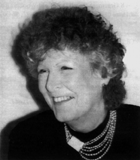
Franceska Rapkin was a pioneer in the advancing of thematic philately and its recognition and inclusion in international philatelic exhibitions. She was a co-founder and first chairperson of the British Thematic Association from its formation in 1984 until 1995, when she was made an honorary life member. She served as a member of the Thematic Commission of the International Federation of Philately (FIP), and the American Topical Association named her its Distinguished Topical Philatelist in 1999.
Rapkin founded the Society of Olympic Collectors in 1984 and was its chairman until 1996. She edited the society’s journal, The Torchbearer, from 1984 to 1993. She was Secretary of the jury at Olymphilex 1996 and Commissioner of OLYMPHILEX 2000. Her thematic collection "Olympic Games 1936" received the first Olympic philatelic gold medal.
An FIP accredited judge, Rapkin wrote Guidelines for Thematic Judges and Exhibitors at Local and Federation Level (c. 1989), and Guidelines for Successful Exhibiting (1991).
Rapkin served as secretary of the Melville and Youth Committee of the British Philatelic Federation from 1975 to 1981, and was on its council from 1982 to 1991. She received the medal of the Philatelic Congress of Great Britain in 1989.
Rapkin wrote extensively and built important collections in her other philatelic fields: Germany and States, thematics, exhibiting, and the promotion of the hobby among young people. In 1999 she was invited to sign the Roll of Distinguished Philatelists established by the Philatelic Congress of Great Britain in 1921.
Robert Granville Stone
(June 27, 1907 - February 1, 2002) Pennsylvania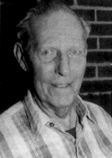
Stone was one of the most distinguished philatelic scholars of the twentieth century. For more than fifty years he contributed greatly to philatelic and postal history research in his chosen areas: French Colonies, Danish West Indies, Ship and Paqueboat mail, and U.S. stamps used abroad.
Bob Stone was unsurpassed in his studies of French Colonies. He wrote numerous articles and monographs on a wide range of topics. Most notable of his diverse writings are his book The French Colonies General Issues (1961), his series on French Colonial provisional issues in The Collectors Club Philatelist, his series on French Colonial pictorial issues in The Essay-Proof Journal, and his bibliography of French Colonies literature in the Philatelic Literature Review. Stone edited the France and Colonies Philatelist from 1964 to 1994, where he wrote numerous articles. He was rightly called the Dean of the French Colonies.
He also contributed important works in his other chosen areas: Volume I of the three-volume treatise Danish West Indies Mails (1754–1917) (1979, updated and revised 2000), and A Caribbean Neptune: The Maritime Postal Communications of the Greater and Lesser Antilles in the 19th Century (1993).
Stone built and exhibited many specialized collections. His Saint Pierre and Miquelon collection won international gold medals.
For his distinguished scholarship, Stone received many honors from philatelic societies throughout the world, among them the Earl Grant Jacobsen Award of the Scandinavian Collectors Club and the Gerard Gilbert Award of the France and Colonies Philatelic Society. Stone received the Lichtenstein Memorial Award of the Collectors Club of New York in 1982 and the APS Luff Award for Distinguished Philatelic Research in 1983. He was the first American to be named a corresponding member of the Académie de Philatélie (Paris). He signed the Roll of Distinguished Philatelists in 1984.
Varro Eugene Tyler
(December 19, 1926 - August 22, 2001) Indiana
Tyler was a foremost authority on stamp forgeries and their forgers. His book on the stamp forgers, Philatelic Forgers: Their Lives and Works (1976, revised and expanded 1991), stands as a unique work in this important area of international philately. His long series of articles on forgeries ("Focus on Forgeries") in Linn's Stamp News was issued in book form in 2000 as Focus on Forgeries: A Guide to Forgeries of Common Stamps.
"Tip" Tyler's earliest interest was in the stamps of Japan, which led him to study their forgeries. He chaired the expertizing committee of the International Society for Japanese Philately from 1965 to 1993, and was vice president from 1963 until his death.
Tyler wrote numerous articles on Japanese stamps and forgeries. Much of his work was collected in three ISJP monographs: Forgeries and Imitations of the Dragon Stamps of Japan (with William Medzelaar, Monograph No. 4, 1971); The Wada Cherry Blossom Forgeries (with Milton Montgomery, Monograph No. 6, 1974); and The Koban Forgeries of Japan (with Kristian Wilhelmsen, Monograph No. 8, 1979).
Professor Tyler chaired the APS Committee on Fakes and Forgeries from its beginning in 1992 until 1998. In addition, he taught a highly popular class on "Detecting Fakes and Forgeries" at the annual APS Summer Seminar on Philately. He contributed to the reprinting and upgrading of The Serrane Guide, published by the APS, providing the foreword and bibliography.
Tyler received the Meritorious Service Award of the Korea Stamp Society, and in 1998 he received the APS Luff Award for Distinguished Philatelic Research.

John Robert Boker Jr.
(January 29,1913 - Arpil 12, 2003) New York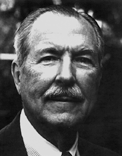
John Boker was one of the most honored philatelists of all time. He was named, along with Alfred F. Lichtenstein, one of the two outstanding philatelists of the twentieth century by the Collectors Club of New York. The club made the announcement during its centenary celebration in 1996. Boker received the award as the outstanding philatelist of the last half of the twentieth century.
John R. Boker Jr.'s collecting interests resulted in some of the greatest collections ever assembled. His German States collection was unsurpassed, and its sale through eighteen auctions by Köhler (1985–2000) was the greatest specialized auction series of all time. His interest in this field was stimulated by his longtime friendship with dealer Edwin Mueller.
Boker also was recognized for his outstanding collections of U.S. postmaster provisionals and locals and carriers. His extensive knowledge in these areas enabled him to rewrite those sections of the 1972 Scott Specialized Catalogue of United States Stamps. Less well known was his collection of U.S. precancels, in which he amassed more than 99 percent of the known types during his lifetime. Boker was a long-time member of the Precancel Stamp Society, serving as both president and a trustee. He was an editor of the Hoover Brothers Precancel Town List. He also contributed articles to Stamps, Collectors Club Philatelist, United States Specialist, and the American Philatelic Congress Book.
Among Boker's other collections were Australian States, Buenos Aires, Confederate States, Fernando Po, Ionian Islands, Reunion, Romania, Serbia, and the Spanish Philippines. He also built collections of postal history and cancellations of various U.S. subjects. As an international judge he was jury secretary at FIPEX (1956), and jury chairman for both SIPEX (1966) and INTERPHIL (1976). He served as president of the Collectors Club of New York (1963–64) and as governor of the club for many years. He chaired its 75th anniversary celebration, ANPHILEX, in 1971. He was a trustee of the Philatelic Foundation (1950–1972) and chaired its expert committee (1968–69).
Boker was honored with numerous awards over the years. He received the Lichtenstein award (1967), the Luff award for exceptional contributions to philately (1978), the Tilleard Medal (1965), the Lindenberg medal (1981), the Neinken medal (1983), and the Robson Lowe memorial medal (2000). In 2002 he was named a Distinguished Philatelist by the United States Philatelic Classics Society, and received the Smithsonian Institution’s Philatelic Achievement award. He signed the Roll of Distinguished Philatelists in 1964.
Horace White Harrison
(November 30, 1920 - October 4, 2002) Baltimore, MD
Horace Harrison was an outstanding student, collector, and writer on the stamps of Canada and the Provinces, most notably on the registered mail of Canada. His contributions to the hobby also include a long-term commitment to the formation and growth of the American Philatelic Research Library.
Harrison used his knowledge and experience in the insurance industry to establish a favorable rate of insurance for philatelic collectors. He chaired the APS Insurance Committee from 1967 until he retired in 1984.
Horace Harrison was an experienced national and international exhibitor, and won his first international medal in 1936 at TIPEX. He formed important Canadian collections of registered mail, the Large Queens, Newfoundland, flag cancels, and postal stationery that received numerous awards both here and abroad. He was also an accredited national and international judge, and served on juries in the United States as well as Taiwan, Australia, and Canada. He was vice president of SIPEX in 1966 in Washington, D.C., for which he designed new frames used at the show and subsequently by many U.S. national shows.
He was extremely active in Baltimore area philately, and served the Baltimore Philatelic Society as president, treasurer, and member of the board of governors. He was instrumental in obtaining the society’s clubhouse. He was active in the BALPEX and chaired several of its exhibitions. At the time of his death he had just completed a term as president of the British North America Philatelic Society. In 1991 he received the BNAPS Order of the Beaver.
Harrison's writings included many articles in various journals as well as two seminal books on Canada's registered mail: Canada's Registry System: 1827–1911 (1971), and the second was Canada's Registered Mail 1802–1909: From Money Letters through Insurance for a Fee, which he co-authored with George B. Arfken and Harry W. Lussey (2002).
He was an avid supporter of the American Philatelic Research Library and served as trustee (1989–1995) as well as treasurer (1978–1985). He carried out important fund-raising for APRL, and bequeathed a large donation that was used to form the library's Vooys and Harrison Library Fund.
Harrison received the Luff Award for distinguished philatelic research in 1974 and was elected a Fellow of the Canadian Philatelic Society of Great Britain in 1978.
Colonel Ralph Archibald Kimble
(September 12, 1893 - October 8, 1973) Chicago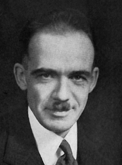
Ralph Kimble was one of America's leading editors, writers, and stamp columnists. He moderated a popular Chicago radio show, "Stamp Talk," for many years to an appreciative audience.
Kimble edited The American Philatelist from 1935 to 1951, except for the years 1943–46. In 1936 he wrote a history of The American Philatelist in celebration of its 50th volume. For many years Kimble published in the AP his "Index to Current Philatelic Periodicals." The card file he created for this column, plus much unpublished information, now resides in the Smithsonian Institution Libraries Branch at the National Postal Museum.
Kimble was a prolific writer. He produced and distributed more than forty monographs on a diverse range of topics: how to collect, United States stamp issues, philatelic literature, and the stamps of Central and South America. He wrote a popular book, How to Collect Stamps (1932), which was revised and reissued in three editions. His book Commemorative Stamps of the United States (1933) was revised and reissued in 1936. He also wrote Stamp Collecting for Profit (1935), and Stamp Collector’s Atlas and Dictionary (1933).
Ralph Kimble was a strong advocate of the value of philatelic literature to the hobby. He formed one of the greatest philatelic libraries in history, which he eventually sold to George T. Turner, who amalgamated it into his own extensive library. The Kimble duplicates were sold in three auctions (Colby 1953-55), one of the largest sales of philatelic literature ever held.
Col. Kimble received the Luff Award in 1944 for Outstanding Service to the APS.
Raymond Henry Weill
(September 2, 1913 - April 21, 2003) New Orleans, LA
Raymond Weill was one of the world's most famous stamp dealers. With his brother Roger (Hall of Fame 1992), the Weill Brothers built great collections, and bought and sold the great philatelic rarities. They brought stamp collecting to the attention of the non-philatelic world through their noteworthy business transactions.
The Weill brothers occupied the same premises for many years in New Orleans, Louisiana. Raymond, together with his brother Roger and their father Fernand, opened the landmark shop at 407 Royal Street in New Orleans' French Quarter in 1932. The firm soon developed a reputation for dealing in the classics, but they still catered to novice collectors, including youngsters, who visited their shop. They helped build some of the world's famous collections and exhibits. Raymond Weill loved to travel and often took care of the buying and selling out of town, while Roger stayed at the shop.
Among the famous rarities that the firm handled was the cover purchased from the Louise Boyd Dale collection, bearing two copies of the 1-penny Post Office Mauritius, sold in 1968 by Harmer. The purchase price of $380,000 was the highest ever paid for a philatelic item up to that time. As a dealer, highly regarded by those who conducted business with him, Raymond Weill was described in glowing terms concerning his honesty, integrity, and generosity.
The Weill Brothers supported philatelic events generously. They gave the Smithsonian Institution a copy of the Inverted Jenny airmail stamp because they felt the national museum should have a copy of America’s most famous stamp. They also supported their local Crescent City Stamp Club. Raymond gave generously to the Postal History Foundation in Tucson, Arizona, including his philatelic library and company records. Weill also was known as an ardent supporter of international exhibitions.
His advertisements extended beyond philatelic journals into such media as the New Yorker magazine, where they helped set a high degree of respect for the hobby in the minds of the public. The firm sold its stock in 1989 to a London bank for more than $10 million. It was auctioned by Christie’s. However, they then renewed and continued their business until their deaths. In 1998, Raymond Weill received the Luff award for exceptional contributions to philately. Both Raymond and Roger were presented the Mortimer Neinken medal of the Philatelic Foundation in 1988.
Return to top of page



